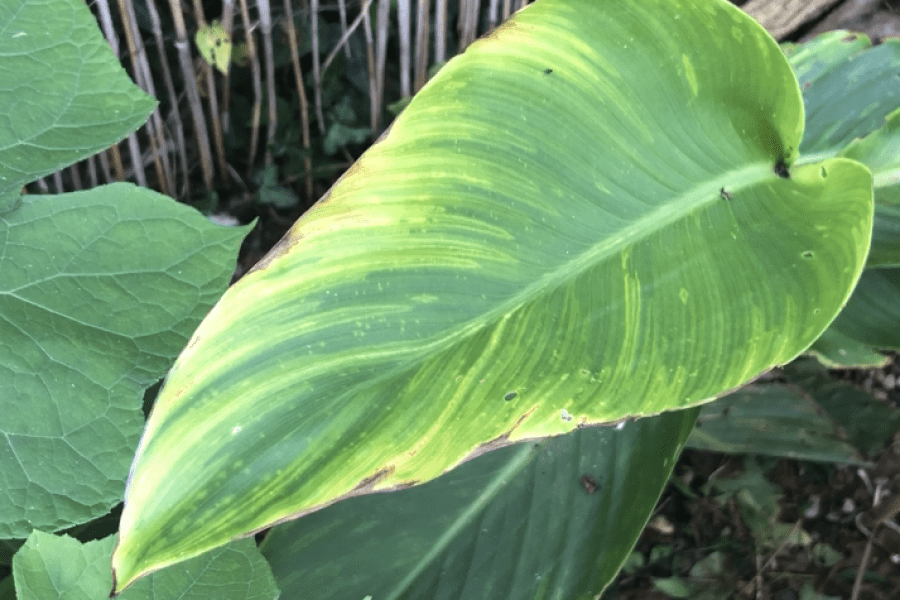Canna viruses are a group of plant viruses that can infect and cause diseases in cannas, which are popular ornamental plants known for their colorful flowers and striking foliage. Unfortunately, there is no specific cure for viral infections in plants, including cannas, once they are infected. Once a plant is infected with a virus, it cannot be completely cured. There is no cure for canna virus. However, there are some steps you can take to manage the situation:
- Prevention: The best way to deal with canna viruses is prevention. Purchase plants from reputable sources to reduce the risk of introducing infected plants into your garden. Inspect new plants carefully for any signs of disease before planting them.
- Isolation: If you suspect that a canna plant is infected with a virus, isolate it from other healthy plants. This can help prevent the spread of the virus to other plants in your garden.
- Sanitation: Practicing good sanitation can help minimize the spread of viruses. Remove and destroy infected plant material, including leaves, stems, and any other affected parts. Do not compost infected material, as the virus can potentially persist in compost.
- Insect Control: Some viruses are spread by insect vectors, such as aphids, thrips, and whiteflies. Controlling these insect pests can help reduce the spread of the virus. Regularly inspect your plants for signs of infestation and use appropriate insect control methods if needed.
- Resistant Varieties: Some canna varieties are bred for resistance to certain viruses. If you’re planning to add cannas to your garden, consider choosing varieties that are known to be less susceptible to viral infections.
- Avoid Stress: Stressed plants are more susceptible to infections. Provide your cannas with optimal growing conditions, including proper watering, fertilization, and sunlight. Healthy plants are better equipped to resist infections.
- Monitoring: Keep a close eye on your canna plants for any signs of viral infection, such as distorted leaves, yellowing, mottling, and stunted growth. Early detection can help prevent the spread of the virus to other plants.
It’s important to note that the term “cure” in the context of plant viruses is generally not applicable in the same way it is for human diseases. Once a plant is infected, the virus is often present in the plant tissues and cannot be eliminated. Therefore, the focus should be on prevention, management, and minimizing the impact of viral infections on your garden. If you suspect a virus issue in your cannas, you might also consider seeking advice from local horticultural extension services or professionals who are familiar with plant diseases in your region.
Cannas, renowned for their striking flowers and lush foliage, can unfortunately fall prey to several diseases apart from the notorious canna virus. One of the common afflictions is canna rust, caused by the fungus Puccinia thaliae. This disease manifests as orange pustules on the undersides of leaves, leading to premature leaf drop and reduced vigor. Bacterial blight, another prevalent issue, is caused by Xanthomonas campestris and results in water-soaked spots that expand into brown, necrotic areas, often accompanied by a foul smell. Botrytis blight, or gray mold, is a fungal disease that thrives in humid conditions, causing flowers and leaves to develop gray, fuzzy growth and rot.
Additionally, root rot, caused by various soil-borne fungi such as Pythium and Rhizoctonia, can be devastating. It typically results from overwatering or poor drainage, leading to blackened, mushy roots and stunted plant growth. Leaf spot, caused by fungi like Alternaria and Cercospora, presents as small, dark lesions on leaves that can coalesce and cause significant defoliation. Proper cultural practices, such as ensuring good air circulation, avoiding overhead watering, and maintaining healthy soil, are crucial in preventing these diseases. Regular inspection and prompt removal of infected plant material can help keep cannas healthy and vibrant.


